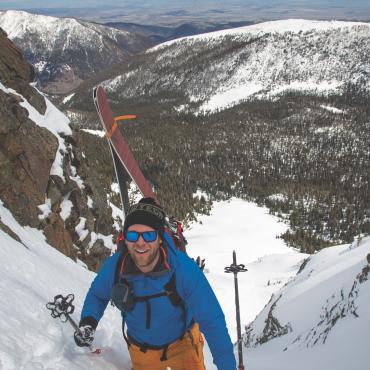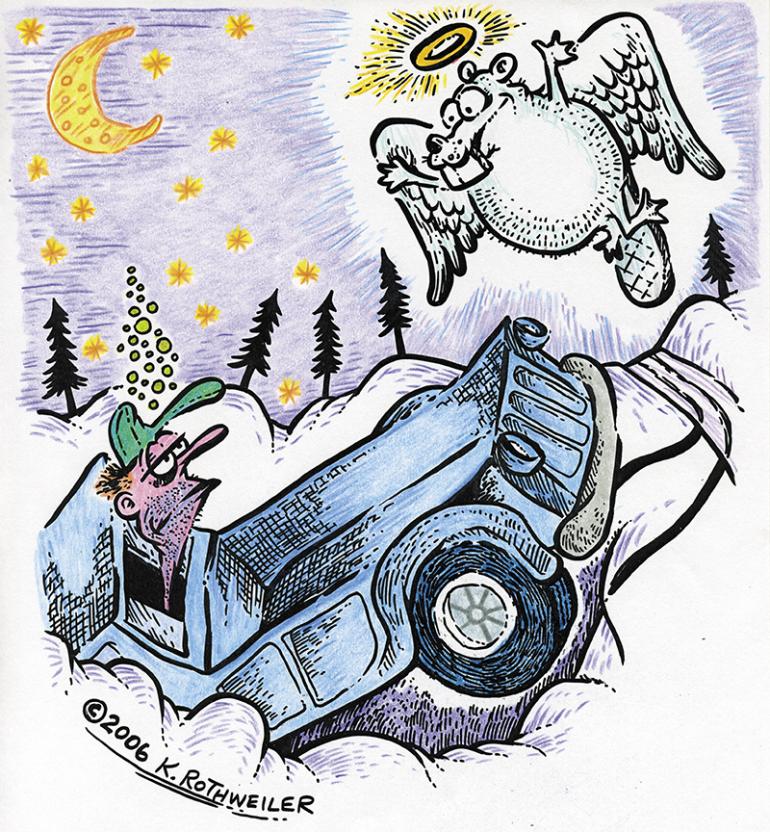Season of the Ditch
It comes every year.
Winter in Montana is the season of snow and ice, skiing and snowboarding, ice climbing and snowmobiling. It is the season of shoveling and scraping, plowing and salting. And for many Montana drivers, winter is the season of the ditch.
I’m no expert—I have no statistics and I’m making wild assumptions, but I would say that every Montanan has either a) driven into the ditch, or b) knows someone who has. I myself have visited several ditches over the years.
Ditch stories contain a certain element of adventure and excitement, which make them a source of pride and occasionally the stuff of legend. In my experience, legendary ditch accounts usually involve great personal injury or wanton mechanical destruction. And sometimes a toothless tow truck driver named Buck.
"I was just drivin’ along…”
This is the traditional beginning of a ditch account. Now, it’s a given that all well-told ditch tales release the driver from all wrongdoing. Blame environmental factors, divine intervention, or the “damn crazy drivers from California”; but never, ever take responsibility for putting your vehicle in the ditch. If no other excuse appears, say a sacred white beaver jumped in front of you. And never question the teller; it wrecks the story. Let the insurance companies sweat the details.
Key Ditch Story Elements
All good ditch stories contain certain key elements. There must be a detailed explanation of the route and exact location of the incident. (“Well, it was up there on 86 coming down from Battle Ridge, right after that long straightaway into the sharp left hand turn.”) All of those in earshot will nod sympathetically even if they have no idea where that is. There must be a dramatic description of the weather and road conditions. (“Now as I was comin’ down the pass, it was slicker than cowpiss on a flat rock and the snow was flyin’ harder than ever. I couldn’t see 20 feet down the road and the windshield wipers were going full blast.”) Hand gestures are generally used for the descriptions; the wilder the better.
The Battle Scene
Now there must be a pause, perhaps for a sip of coffee or beer, depending on the time of day the story is being told. After the pause, give a graphic description of the loss of control, the battle to stay on the road, and the eventual climax of actually entering the ditch. (“I was on the straightaway, and I knew the turn was comin’ up so I started pumpin’ the brakes. Nothing. I was pumpin’ and pumpin’ and I just slid. I knew I wasn’t gonna make it, so I goosed the throttle and got the nose headed straight down the embankment. There were some big ole’ pines about halfway down, and I don’t know how, but I managed to go right between two of those suckers. It was a pretty good jolt when I hit the creek bottom. The snow was so deep I had to crawl out my window. Coulda’ been worse.”) Again, gesticulations are highly encouraged.
The Reaction
After this, all of the listeners exhale loudly or give a soft descending whistle to acknowledge the gravity of the story. Positive comments are usually exchanged. (“Sure were lucky!” or “How much did that one cost ya?”) Shortly thereafter, the next story can begin.
Ditch stories are part of Montana culture and lore. As in life, if you have gone off the road, don’t be ashamed. Embrace it, embellish it, and tell the story proudly every chance you get. If you haven’t gone off the road, maybe you aren’t trying hard enough. Anyone can get from point A to point B without incident; it takes a special driver, a Montana driver, to spin wildly out of control. Enjoy skiing and snowboarding. Enjoy cozy, snowy nights. Enjoy all the beauty of winter. Enjoy the season of the ditch.













